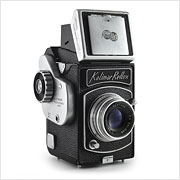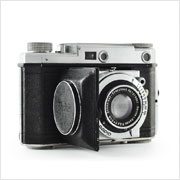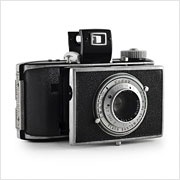Kalimar Reflex
The Kalimar Reflex (also known as the Soligor 66, Haco 66, and Fodor 66) is an unusual looking 120 format single lens reflex camera originally manufactured by Fujita Kogaku as the Fujita 66 and then rebranded by American distribution company Kalimar (and others) for sale. The Fujita 66 and its clones are heavily based on an upright medium format SLR system developed by the German designer Heinz Kilfitt who also created the Metz Mecaflex as well as the original prototype upon which Robot modeled its cameras.



